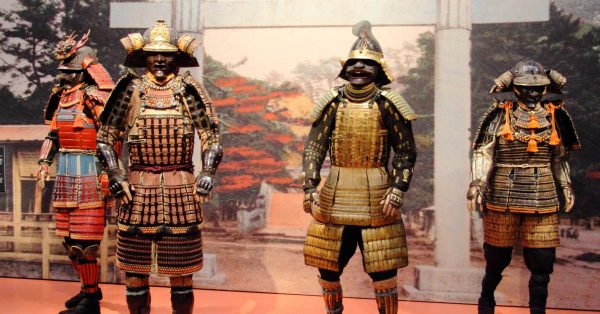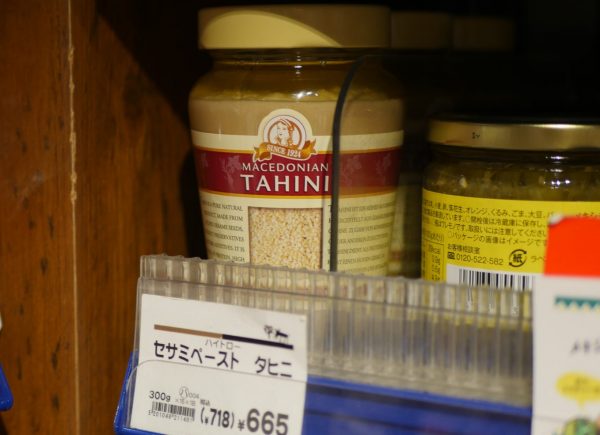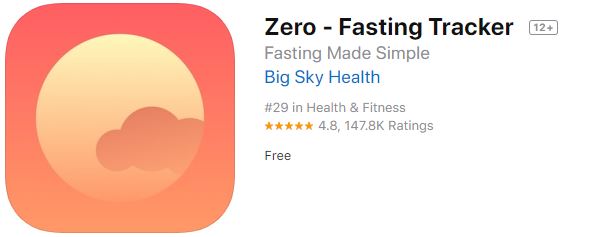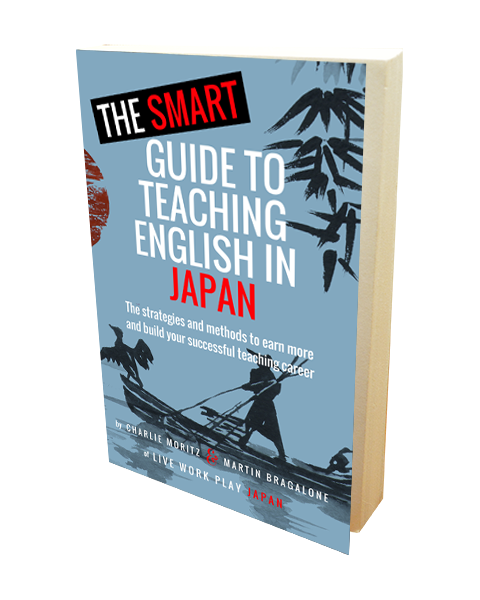Getting fit and looking after your health is one of the best habits you can cultivate. The food and gyms available here are different, so here are a few tips to get fit and healthy in Japan!
Getting fit is seriously important for both work and life no matter where you live. Human beings are designed to move, and our modern economic realities have made this harder and harder to achieve on a daily basis. Where once we would be walking everywhere, hunting wild animals and fighting (thank God we don’t have to do that anymore), the reality is that our sedentary lifestyle is terrible for our bodies, our minds and our ability to produce our best work.
Since early 2018 I’ve started working out and being more careful with what I eat, and the results for my business, my teaching and my life in general have been amazing. The thing is that it hasn’t been easy, particularly because eating and working out in Tokyo is a little bit more complicated than it would have been back home where gyms are huge and cheap, and high-protein foods, supplements and meal plans are readily available.
So here’s where this article comes in. I’ll explain some of the things that have helped me to work out with consistency, eat healthily and build the habit of taking care of my body.
Eating healthy in Japan is harder than you think
Yes Japanese food is healthy, but there are some big caveats that you might not know unless you have read into long term effects of the diet here.
Here’s a fascinating bit of Japanese history that you don’t often hear about. I can’t swear by it but I’ve heard from more than one source that this is the case. Japanese men used to be a lot bigger, taller and stronger than they are now, in large part due to the historical diet. There is evidence from the Samurai armour currently in museums that some have been adjusted to fit smaller men, and some older suits of armour passed down for generations seem like they were originally made to fit taller men.
Obviously most people now and even in feudal times do not fight or train like they used to over a thousand years ago, but the change in size and height is particularly interesting. Why would people get smaller over time when most of the world, including Japan, has better access to food and nourishment than ever before?
Well, in Japan the land is very unforgiving to meat production, and the fact that it takes so much grain and feed to produce meat was considered an inefficient use of land (in that sense they were way ahead of their time, as evidence shows that to make 1 pound of meat you need 7 pounds of grain and thousands of litres of water). Before the stronger acceptance of Shintoism in Japan in Sengoku-Jidai (and before the introduction of western culture and food), many Japanese people ate a considerably higher diet of meat and fish.

Its possible that samurai used to be taller…
As meat consumption declined for religious and population reasons, people turned to soy and rice as sources of food that could feed more mouths. When you eat less meat and eat more rice and soy, you’re going to lose a lot of that protein that helps to build strong muscles. Rice is also a particular issue as it has a horrible nutritional profile; it’s basically just useless carbs and even though it’s difficult, you should try to avoid eating much of it (you can almost always ask for 少なめ – less when it comes with meal sets). Rice ranks highly on the Glycemic Index (GI), which explains a lot of those napping samurai salarymen on the trains in Tokyo.
When living in Japan and also working out, bulking up and aiming to get strong, you need to be aware of your food intake. So what can you do?
Do you even need to diet in Japan?
Japan has a reputation for having fantastic food and for people in Japan being very slim. It is very rare to see overweight Japanese people, especially to the level that I had gotten used to in the UK (and is a reverse culture shock every time I go home).
However this doesn’t mean that all food in Japan is healthy, and especially if you have goals that aren’t just about living on a caloric deficit and staying slim, you’ll need to figure out what foods to eat and which to avoid. Unfortunately in Japan there is a lack of information about food in general, and even if you are personally more informed about food and health than the average Japanese person, you’ll still run into pitfalls. One of them is that food labels about nutrition are not obligated to include all of the facts. Many of them don’t even tell you how much sugar is in the product, and I don’t just mean added sugar, there’s just no mention of sugar at all!

This bread doesn’t say how much sugar is in it! Why not? It has sugar added…
That and the fact that almost all foods have sugar added to them, and you’ll have a tough time dodging unhealthy foods for the first few months of healthy eating. Reading labels in English is hard enough, but in Japanese it’s even more of a pain! There are dozens of names for different types of sugar on Japanese food labels, and if they don’t tell you the amount of sugar (they regularly don’t) they at least have to mention it as an ingredient. They might call it:
- 砂糖 – Satō, Sugar
- ぶどう糖 – Budō-tō – Grape Sugar
- 糖分 – Tōbun – Sugar
- 水あめ – Mizuame – Syrup
If you’re planning on doing keto, reducing sugar intake or even just low carb you’ll want to be aware of how much sugar is in your food, and often it’s a lot more than you would expect. Tomato sauces, pesto, nut butters… a lot of things that you wouldn’t expect have sugar added, and it isn’t always clear from the nutritional information that they do. Know your sugar kanji and avoid them.
The Whole Soy Story and Meat vs Fish
I know what you’re going to say, “tofu is a good source of protein” and that is true compared to many food groups. The thing is that there is a lot of controversy over the soy industry and particularly about it being labelled as a health food. Raw soybeans are actually toxic to humans and only become digestible when fermented. As you can imagine many soy products would be disgusting if they were fermented. “Here, you want some fermented soy milk?”

Soy Milk – the one on the right is low sugar
It’s already gross, now imagine it had the consistency of natto…
There are studies on either side of the soy question; isoflavones in soy protein have been shown to reduce male production of testosterone by 19% and cause hormonal imbalance, but there is too much misinformation about this for me to comment and be sure that I wasn’t spreading the wrong ideas. This study showed no effect in men when combined with weight training but admitted that it is unclear whether soy proteins would have any effect on sex hormones. For now I’ll let you do your own research and make up your minds about it, but I’ve stopped eating tofu as a meat replacement and generally avoid soy aside from the very occasional bowl of miso soup.
Here’s a very well known book about soy and all the issues surrounding our understanding of it.
So regardless of the soy question, consuming good quality meat is going to help with building muscle. As a former vegetarian, I can say that since going back to consuming meat (and I’m talking about the least processed meats like grass-fed beef steak and free-range chicken breast) I have noticed a big increase in my energy levels and strength gains. I’m not arguing against going vegetarian or vegan – you really have to find out what works for you and what makes you feel good. Diets are all over the place but I love the principle behind WildFit, a diet that tells you to experiment with your eating habits and find out what feels good for you, not just when you’re eating but afterwards. It’s kind of like mindfulness and healthy eating rolled into one, and it makes sense since all of us will have different gut bacteria, different preferences and our bodies will respond differently to foods (especially when living in a completely opposite food culture to our native one).
If you want to be a vegetarian and you find that lifestyle suits you, go for it. Just be wary that Japan hasn’t exactly fully understood the vegetarian diet yet. Even the concept of vegetarianism doesn’t have mainstream understanding in Japan, and going out to eat as a vegetarian means that you need to pay a lot more attention to which restaurants you are eating at. Plan ahead and find places that have options for your needs, and your friends will thank you.
Fish is also an incredibly good source of protein, but you have to be careful with this one. I am personally a huge fan of sushi, particularly まぐろ (maguro – tuna steak). Unfortunately it is quite high in mercury and shouldn’t be eaten more than a few times a month. According to the EPA having a maguro set of about 8 pieces of fatty and akami tuna would put you way over their guidelines for mercury intake. So if you can eat sustainably caught fish, but just not too much of the types that have high amounts of mercury content as there are a lot of health benefits to not going overboard on the mercury in your system.

I LOVE まぐろ but it’s not healthy to eat it too often.
Some alternatives to tuna are サーモン salmon (more sustainable), and 鯖 (saba – mackerel). Both full of protein and brain healthy omega oils.
Where to get healthy food in Tokyo?
One of the things you’ll notice when you go to shops in Japan is that the options for people on restricted diets are very limited. Now you might be lucky enough to have a local supermarket with great fresh produce and a meat counter, and if you’re avoiding a lot of the unhealthy packaged foods you’ll also want to get good at cooking. To find specialist foods that have the kinds of nutrients you like (as well as being yummy) I’ve found the following places are excellent to go to for a diverse selection of healthy options.
Seijo Isshi

These stores are usually at the biggest stations and around Tokyo there are quite a few. In fact there used to be 2 of them right next to each other in Shinjuku station! The prices are a little expensive but when you’re looking for specific foods there are very few places that have the same selection of 珍しい (mezurashii – rare) foods.
Some of my personal favourite things to buy here are their no added sugar thick and creamy yoghurt, Marmite (I’m British, sue me), and the great selection of cheese (the Irish mature red cheddar is my baby). There are a lot of options with not only Japanese style foods but world cuisine. I used to buy fajita spices and salsa from here before I started making it myself, and most of the stores have better yoghurts (probiotics are good for gut health – you can even buy the kefir culture here to make your own yoghurt!) and cooking ingredients than a supermarket.
Also if you like to bake as I do, they have things like wholewheat flour for making bread, though I usually buy all of that stuff from Tomiz, which has shops in Shibuya, Shinjuku and Kichijouji (among other places).
Kaldi Coffee Farm

Despite having a name that is about coffee, this is actually an import store with a bunch of reasonably priced oddities from other countries. I regularly go here for my sliced beetroots and jalapenos to make my sandwiches so much better. Their coffee is better than supermarket, but as I’m really into coffee (I even have a coffee YouTube channel) I tend to roast my own or buy it from a speciality shop like one of the amazing coffee shops in Tokyo that I wrote about here.
One of the things they have that I love is Tahini. It’s incredibly useful for making hummus, which is one of the international food trends that hasn’t made it to Japan. I make my own with ひよこ豆 (hiyokomame – chickpeas) and tahini, and it’s incredibly delicious! They have it at a lot (though not all) of their shops and it’s not all that expensive for a jar that will make maybe 8-10 batches of hummus.

Tahini is a critical ingredient for hummus, a protein rich, vegan and delicious Mediterranean food you can easily make at home.
iHerb
This is an especially useful site if you are looking for supplements and protein powders as the ones available in Japan are decidedly… lacklustre. Don Quixote has a few but the Japanese brands always taste crappy and I’m a really big fan of the Double Rich Chocolate Gold Standard Whey Protein that makes my workout feel like a reward (in fact Charles Duhigg writes about creating rewards circuits for yourself in his book The Power of Habit, so getting yummy protein powder also helps you to build the habit of working out as well as the muscle.
I don’t just use it for protein powder, I also get some of the few supplements that I use from here too. I’ve been taking this Calcium and Magnesium supplement to help with bone strength and sleep, and while I can’t scientifically vouch for it’s efficacy I do feel like it is helpful for my sleep in particular as well as avoiding muscle cramping, which basically never happens to me now (very important as I’m doing acro yoga and I don’t wanna be dropping people because of muscle cramps).
They ship worldwide, arrives in good time and I’ve had nothing but good experiences with them.
What’s up with Intermittent Fasting
Intermittent fasting is where you avoid eating for most of the day in order to put your body into fasting mode. The most common type of intermittent fasting is called 16-8 where you fast for 16 hours and then eat for 8. You can do this every day, or frequently, or infrequently depending on your personal goals and your level of willpower (and damn does it take willpower).
The way I see it, human beings were not designed to have constant access to food. This is a very new thing in human evolution. Thousands of years ago when we were hunting for food, when we failed to catch something we would go hungry. If we couldn’t concentrate, couldn’t focus, couldn’t hunt, run or fight when we were hungry, the human race wouldn’t have survived very long at all. That’s why every major religion and most cultures have understood and included fasting as a cure for many bodily ills. Not eating gives your body a chance to repair and heal when it isn’t using energy for digestion.
And it’s damn hard.
I’ve been eating this way for the past few months (doing 18:6, so only eating from 1pm to 7pm) and it has gotten to the point where I can do it without apprehension about feeling hungry. At first I was worried about going without breakfast every day, and that feeling of hunger really amplified those feelings as my body started freaking out about not having food. After a few days though I got used to it, and my body stopped grunting for food. I drink a lot more water as this really helps to distract my stomach from feeling empty, which also has a positive effect on my health.
It can be hard to eat enough volume of food to put on bulk while also fasting for 16 hours or more, so I’ve picked up a meal supplement called Huel (not an affiliate link, I just really like it) to help me get enough calories in my 6 hour window. One shake is about 500 calories (with milk) and it really helps as it is quite calorically dense, but has a very healthy and sustainable nutritional profile.
The results? I’ve put on quite a bit of muscle, lost a few kilos and have all day concentration while healing from injuries and fatigue faster. I honestly love it, and quite apart from anything else being able to stick to it has given me a lot of confidence in my ability to mind over matter!

A helpful app to track this (and maybe boost your motivation to keep it up) is called Zero. I used it for a while but since I’ve made IF my habit now I’ve found that I don’t really need reminders or motivational tools to keep me on task.
How to Go Keto in Japan
The ketogenic diet (keto) is a hot topic right now, particularly amongst people in fitness, weight-loss and scientific circles. Keto requires you to remove carbohydrates (for most people less than 50 grams of carbs per day) so that your body can start to use fat stores for energy instead of being dependent on glucose from burning carbs. The diet has become a bit of a fad recently with high profile people like Tim Ferriss doing it and swearing by the results they have gotten in terms of fat loss, prolonged energy throughout the day, and increased muscle growth from workouts.
Here’s a great video from What I’ve Learned about the keto diet and how it can help you to lose body fat while building muscle and taking back control of your blood sugar.
Hitting the Gym
I could give you a list of all the most popular gyms and all of their prices, but there’s just one piece of advice I can give you here – the best gym is the one that you can easily integrate into your daily routine. This means near your home or work. Any gym you need to travel far to go to will add an extra barrier between you and getting your workout. I go to Anytime Fitness not because it’s the best gym (it isn’t, and I really wish they had kettle-bells and rowing machines at my local one) but because there is one a short run from my house and one near my work as well. There’s no excuse for me to not get to the gym at least three days per week, and I aim for five.
A big part of this is habit formation, which I am doing a seminar about at the end of October in Shibuya; you need to make going to the gym a non-negotiable habit that you look forward to. I miss the gym when I go on holiday and don’t go. Whatever that motivator is for you, whether it’s looking great naked, getting six-pack abs (much harder than it looks and much more to do with diet than workout) or being strong enough to do better at your favourite sport, it’s important to turn it into a “do” rather than a “try to do”.
In Atomic Habits, James Clear writes that the strongest habits that stick come from building up on a foundation of 1% improvements rather than massive changes. I didn’t start with going to the gym five times per week, but actually started by just going whenever I felt like it after work for the first month. I packed my gym kit every day and would just show up at the gym after work whether I was going to work out or not (it is right by the station so this is easy for me). If I felt like going to the gym once I got there I would do a quick workout (maybe 30 minutes), and if I didn’t feel like it, then I would just go to the gym, walk in, then leave.
After a month of doing this I would go to the gym on autopilot after work, and have been doing this for the past eighteen months. There’s power in making small habits like just showing up at the gym or doing a few small workouts. Now most of my workouts are forty-five minutes to an hour long, and at the gym near my home there’s a 15 minute run either side of that. I enjoy it now, and do a lot of it without having to mentally push myself to go like I did in the beginning.
Tricks to building muscle fast
Okay so I’m hardly an authority on this but I’ve learned some great tricks from friends of mine who are in great shape, or who are personal trainers or food researchers. Here’s what I’ve learned in ther past 18 months working out 3-6 times per week and reading a lot about optimisation:
Macros and eating more
You probably need to eat more. It takes a lot of protein and calories to actually build muscle, so aim for 1g of protein per pound of body weight per day (2.2g per kilo) and raise it up to at least 3000 calories to start. I weigh about 80kg so I aim for about 160-180g of protein per day, which is not all that hard to get if I eat meat, and much harder if I am on a meat-free day. I used to be a vegetarian for environmental reasons but I’ve realised how unsustainable that was for me, and now I try to avoid meat where possible and make up the protein difference with eggs (4 egg french omelette when I break my fast is about 30g of protein) and protein shakes (36g per shake). It’s tough to get enough protein while also fasting but it’s doable with chicken (ecologically the most sustainable meat) and the occasional steak.
Your Workout
A big booster workout technique I got from a soldier friend of mine (who is built like a powerhouse) is to start every workout with either deadlifts or squats. I do two sets of 10-15 reps or until failure at a middle weight, which is 60-80kg for me but you know what you can handle.
Why this particular exercise? Well it’s because heavy leg exercises stimulate the growth plate causing an increased release of growth hormones that has a ripple effect for the rest of your workout. I went from lifting a little (40kg deadlifts) to lifting a lot (80kg deadlifts!) in just two months doing this every workout, and I could feel the difference after a short time. After doing a couple sets of deadlifts your legs will feel almost numb from the weight and it feels like you worked hard. Give it a try, and make sure to watch a video like this one about deadlift form, AND get some tips from trainers, as it is really important to keep your back straight while doing this exercise!
Next tip is to do as many circuits and full body exercises you can over isolation. Obviously we all want big chest, guns and abs, but you shouldn’t do too much isolation, especially just by doing exercises you like. You end up doing too much on one muscle group and not enough on others and you’ll look like one of those stereotype guys who only works on their upper body and has puny legs.
You can invent your own circuits based on what you need to work on, and find exercises for it through aps and workout websites and programs. I love doing things like: pull-ups to failure, 5x barbell lifts, 5x skullcrushers, 5x yates row, all of them with a weight that has the last rep feeling close to failure. It helps if you have a gym that isn’t too busy, and I’ve been hitting the gym during my fasting window in the morning at 7:30 or 8am and there’s often nobody or just one other guy there.
If you hate running like I do, that doesn’t mean you can neglect cardio!
I’ve seen a lot of guys who workout constantly and look shredded, but they can’t run for more than a kilometer without giving up. You need cardio just as much as resistance training, if not more. I started taking latin dance classes a year ago not just for cardio, but to have fun. On days when I’m dancing I’ll sometimes skip the gym because I’ll basically be doing cardio exercise for 2-3 hours at the studio or salsa club. Find out what cardio activities you might like, whether it’s playing basketball, running or whatever, and try to fit it into your routine every few days. SOGO Fitness is a great way to make the cardio stuff more fun, and I’ll talk more about that below.
Some useful resources for workouts are:
Muscle and Fitness Beginner’s Guide – Has some good stuff in there if you’re just starting out or need a refresher. It has sets of activities separated by day so it doesn’t get boring like you’re doing the same thing over and over.
Fitness22 – I use this app to give me ideas when I want to put something new into my circuits or focus on a particular exercise (like abs or chest).
I don’t use any fitness trackers because I find them exhausting and demotivating, and I’d rather hit the gym at my own pace instead of measuring everything. I have the good habit of going every few days anyway so I don’t need to go crazy about it.
Fitness Community in Tokyo
I got extra excited about fitness after I joined SOGO Fitness, a community of people trying to stay fit and get strong in Tokyo. I interviewed one of the leadership team here on my podcast about SOGO and his own fitness life and business. I’d highly recommend joining this community if you’re based in Tokyo, as having other people to help keep you accountable to your fitness goals is invaluable. I try not to compare myself to the leaders too much as many of them look like they compulsively do pushups in their sleep.

SOGO Fitness does a fitness bootcamp every Sunday in Yoyogi park. Its free!
One of the best things about SOGO is that it’s a non-profit, meaning that classes and events are either free or operating at just the cost of renting the space. In Tokyo I’ll take any chance I can to save some money, and I’m into yoga and acroyoga so going to their 1,000 yen class over the standard 3,000 yen for a retail priced class is very welcome.
You can find out about SOGO weekly classes and events by joining their Facebook group and just showing up to events. Try bootcamp on Sundays in Yoyogi park if you want to push yourself for starters, then branch out depending on your interests.
Whatever you do, just start
Building the habit of being mindful of what you spend your time doing, eating well and working out is hard but well worth it. Don’t be afraid to start thinking that you’ll need to dedicate hours of your life every week to all this stuff you don’t quite understand yet. Building these habits now will not only help you to earn more of your time back in the energy and strength you feel to do stuff, but it will also have a knock on effect to every other part of your life. I know my business and my work has improved in orders of magnitude since I started taking my health and fitness seriously.
I hope this article has been useful for you. If it has, please share it with a friend who wants to get fit and healthy. You can also subscribe to Live Work Play Japan to hear more about building a life you don’t want to escape from right here in Japan.



